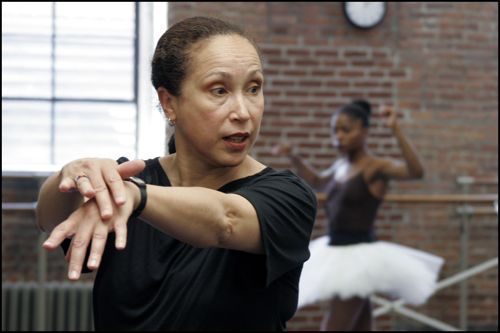Barcelona Ballet / New York City Center / April 17-20, 2012
 Ángel Corella, artistic director of the Barcelona Ballet and the company’s star dancer
Ángel Corella, artistic director of the Barcelona Ballet and the company’s star dancer
Photo: Erin Baiano
For a long and happy time, we thought of Ángel Corella, a much-adored star with American Ballet Theatre, simply as a king of dance. Now we’re coming to know him as a “native son.” The classical company he founded in Spain, his birthplace, now called the Barcelona Ballet, owes its existence in large measure to his decision that such a troupe was needed. Spain, celebrated for bringing dances of the people—flamenco, for one—to high art, has often had a lackadaisical attitude toward classical ballet.
In the course of a decade’s work, Corella exercised his determination to change that situation, all the while maintaining his own celebrated performing career. Now, with Barcelona Ballet appearing for the second time at City Center, he has made the inevitable decision to leave ABT in order to devote himself fully to his company in Spain. It was time, or almost time. He was the main drawing card for the City Center engagement of the troupe, appearing in the program’s full-company, wow-zowie closer in brief, sometimes softened doses of the bravura stuff his fans expect of him and a long solo heavy on melodramatic pantomime. The ballet, Pálpito (Hunch), by Ángel Rojas and Carlos Rodríguez, was hardly distinguished, but Corella performed with dignity and purity of purpose, along with the innate sweetness for which he is beloved. He retires officially from ABT on June 28, no doubt among laurel wreaths and tears, dancing Swan Lake with Paloma Herrera.
Corella has made a smart decision, I think, and, like Arthur Mitchell with Dance Theatre of Harlem and Edward Villella of Miami City Ballet (both ironically railroaded out of their tenure after they’d fulfilled their main mission), he has stamped his dancers with his own convictions: devotion to the job of dancing, accuracy of execution, unity of style as a company. At this point, Corella’s protégés are quick to define legato and staccato yet shy of revealing the emotions that might go with these modes. They are neat as can be in their footwork, but without the sharp edge that can make neatness thrilling. Their jumps and leaps are automatically buoyant—still more as if by fiat than by choice. Their turns—turns in every form imaginable—are phenomenal and enviably confident; what they might signify is still obscure. In sum, the Barcelona dancers have a long way to go, but they’re clearly on the right path.
At the moment, every single dancer in the company makes you conclude that Corella is a rigorous and charismatic taskmaster. Still, his dancers will have to loosen up a bit; become more musical, which should help them be more expressive; assert some independence that will let them own their roles. And even a pedestrian could tell them never to smile unless the smile were spontaneous.
 Center: Barcelona Ballet’s Aaron Robison partnering Ana Calderón
Center: Barcelona Ballet’s Aaron Robison partnering Ana Calderón
Photo: Erin Baiano
Having groomed his dancers for competence, Corella will eventually need to take the next step—the difficult one of breeding (or attracting) a few stars. Apart from himself, Corella doesn’t have any at this point. I saw only two dancers of distinction. The first is Carmen Corella, Angel’s sister and the company’s associate artistic director, a tall ravishing beauty but a strangely placid mover. The other is Aaron Robison—a big guy and obviously muscular (most of the men are small and slight), with an ability to—let’s call it—make his presence felt. The program had three dances and he was in all of them. During the first piece, I noticed him. In the second, I looked for him. In the last I was sold on him. I’m told that Suzanne Farrell would say to her pupils, “Make me notice you.”
 Barcelona Ballet’s Carmen Corella and Dayron Vera
Barcelona Ballet’s Carmen Corella and Dayron Vera
Photo: Erin Baiano
Despite the many achievements that still lie before them, Corella’s dancers already hint—through their well-marshaled energy and their intense focus in performance—at their desire to be something beyond correct. Could that something be wonderful, transformative even? I hope so, because no amount of purely anatomical or theatrical prowess can make a dancer who lacks that desire interesting to watch.
© 2012 Tobi Tobias




